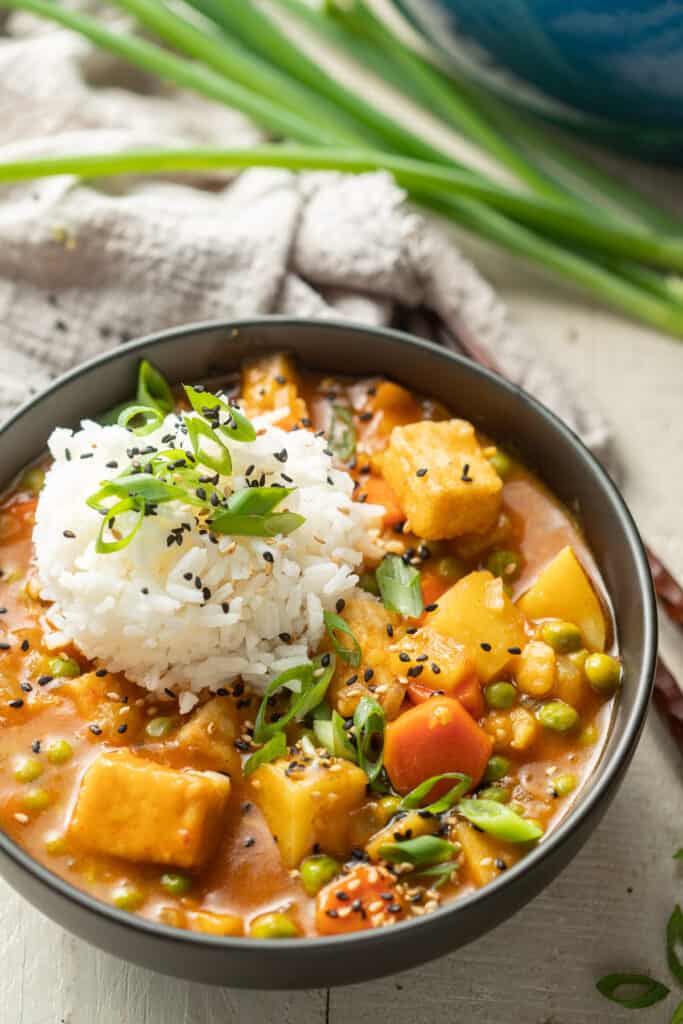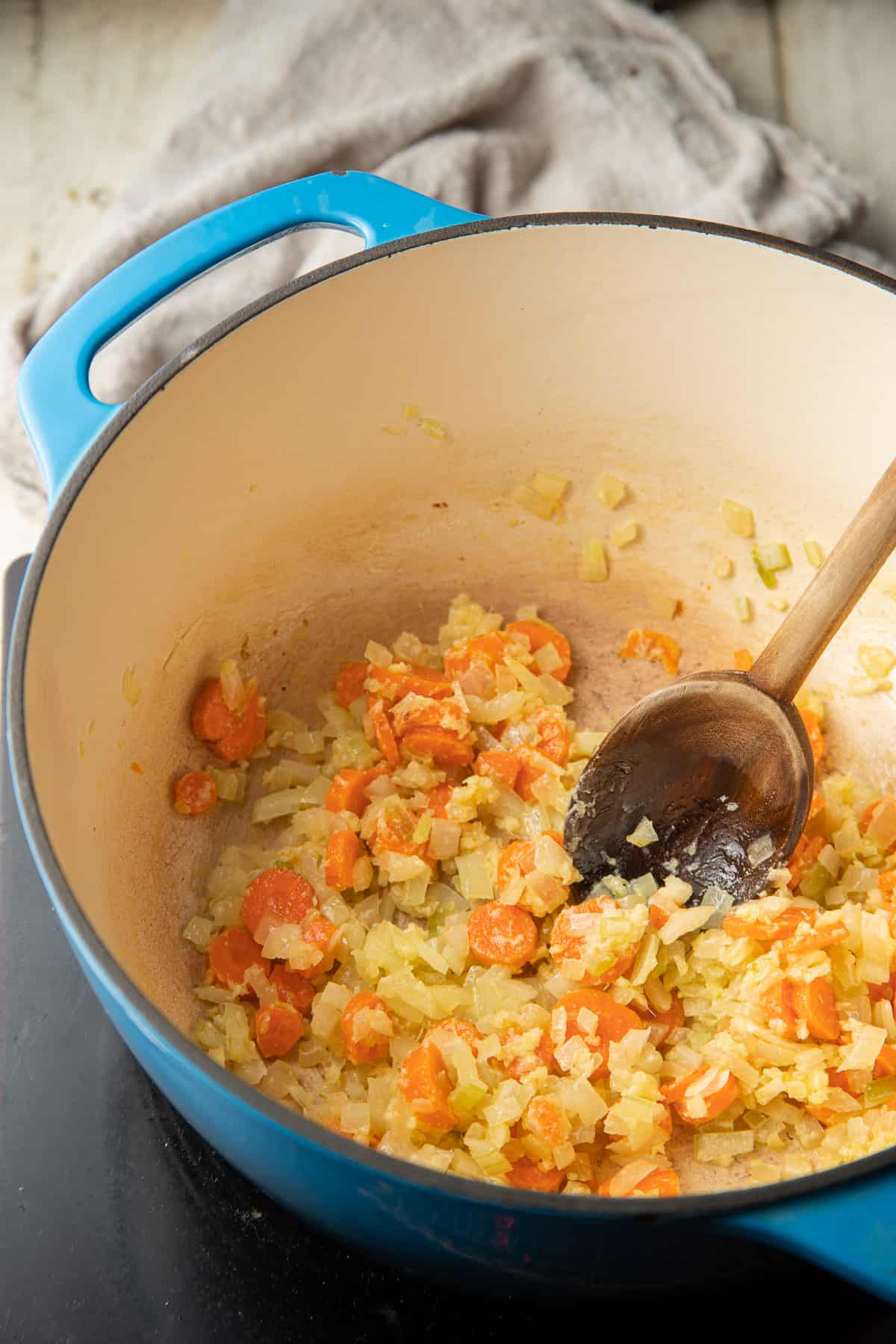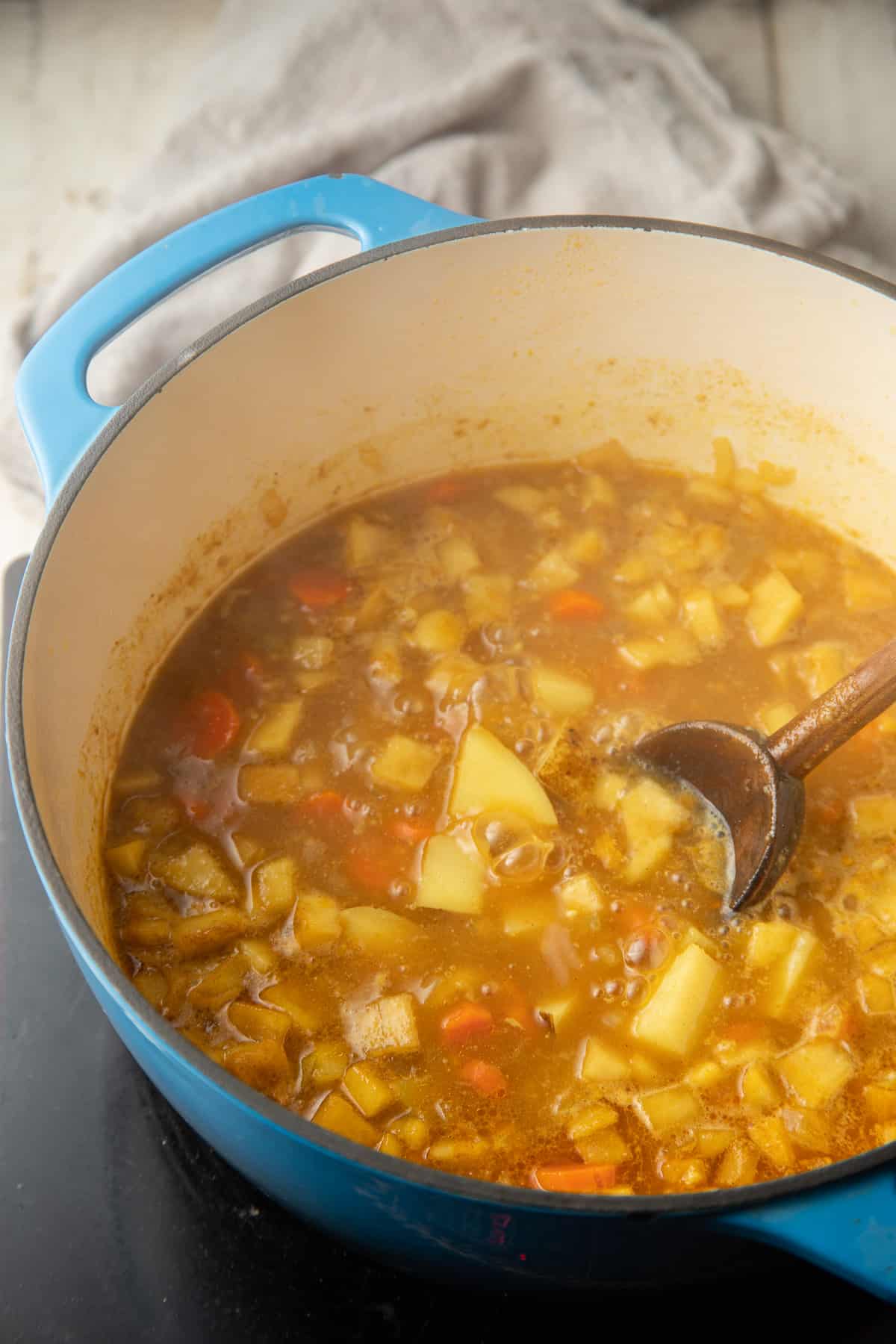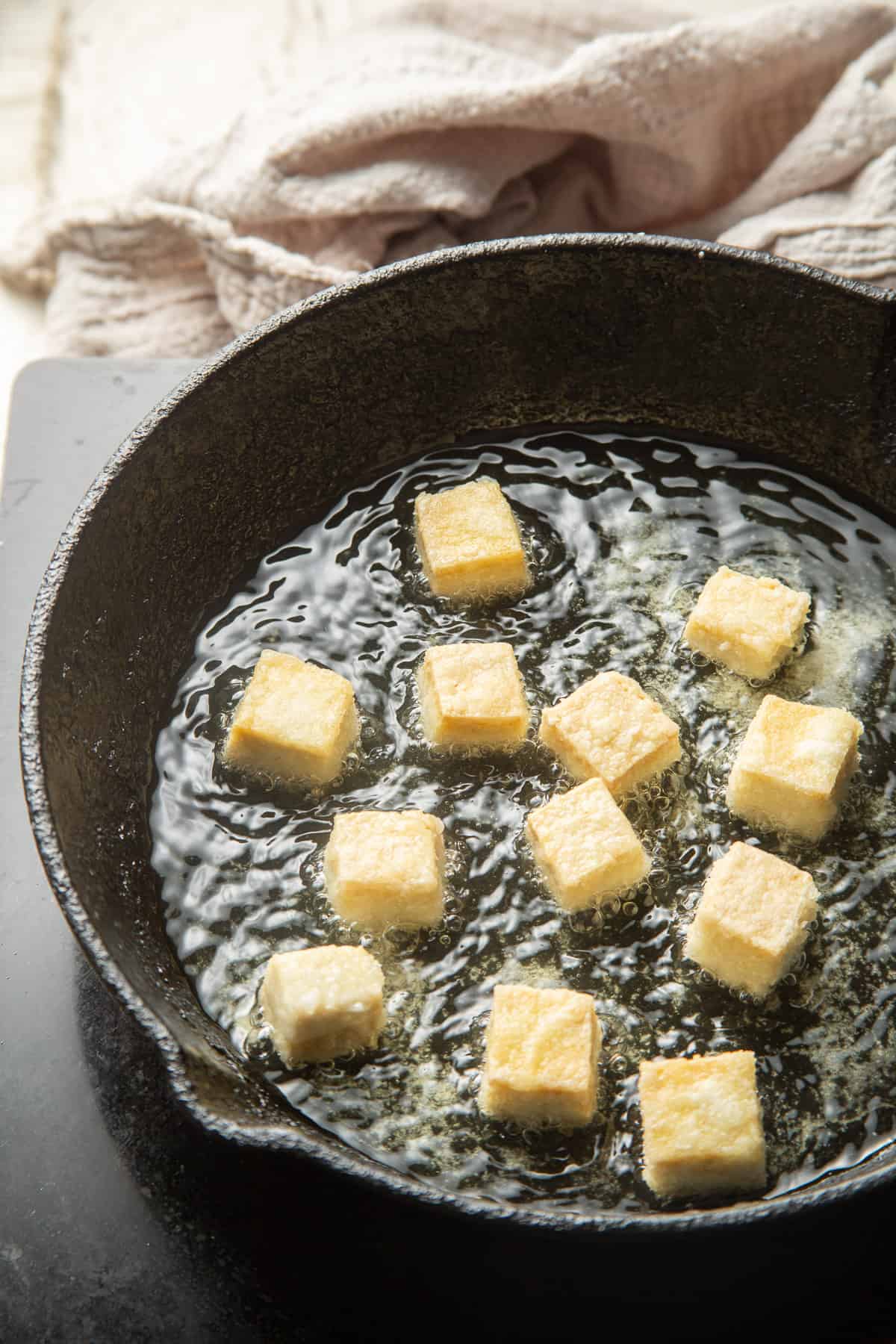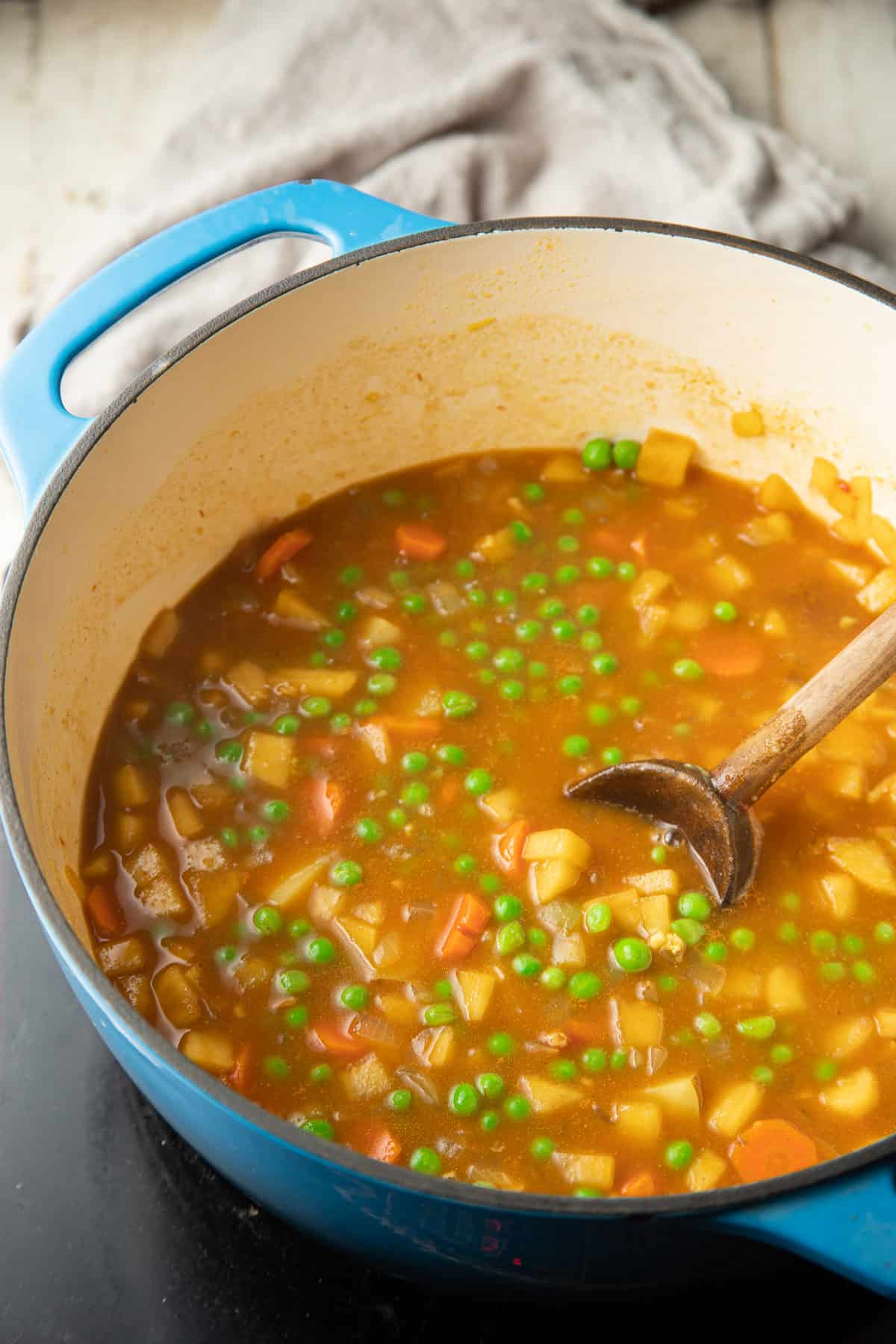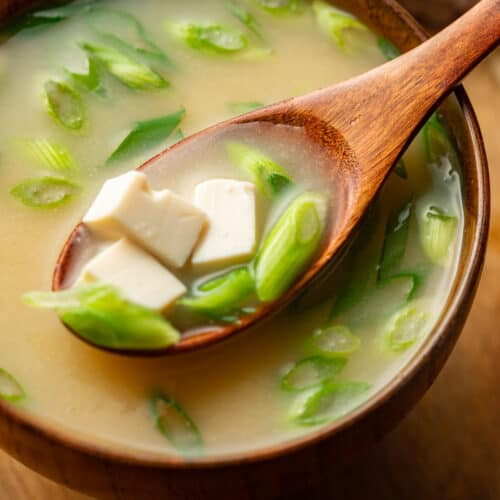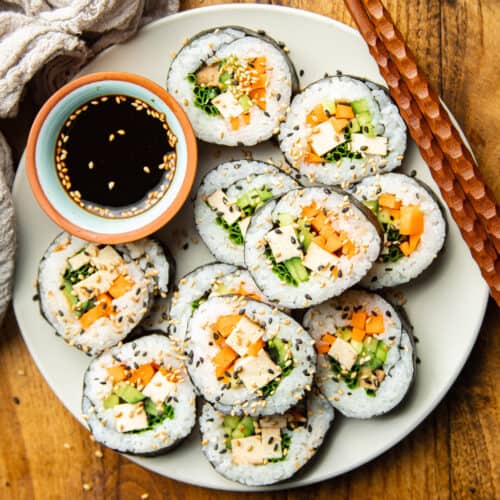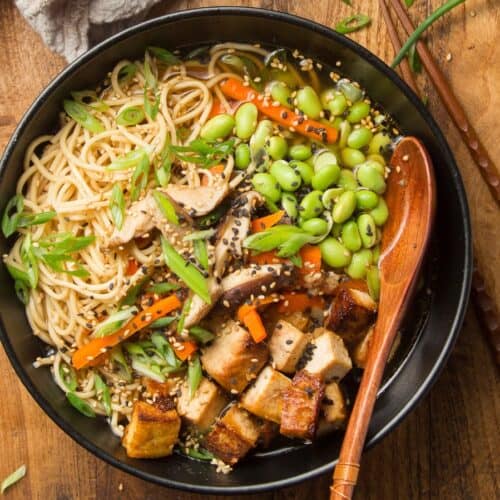You’ll find a lot of variation across the globe when it comes to curries. There was a time when I thought curry just meant any dish that was made with regular old curry powder. But there’s actually SO MUCH MORE to curries. I’m a little bit of a collector of vegan curry recipes, and each country and region has their own style curry with it’s own unique flavors and ingredients. Japanese curry is a cozy stew that’s mild and made with a touch of cozy warming spices. Comfort food is what comes to mind when I think of this type of curry, and that’s what I had in mind when I developed this vegan Japanese curry recipe. This recipe, while delicious, isn’t entirely authentic. It includes all the flavors of a traditional Japanese curry, but takes a few shortcuts in terms of cooking methods. This makes it easy to prepare and perfect for those weeknights when you’re craving a hearty meal that will warm you up!
Ingredients You’ll Need
Peanut oil. Feel free to substitute another high-heat oil, such as vegetable, coconut, or canola oil. Onion. Carrots. Flour. I’ve only tested the recipe with all-purpose wheat flour, though I’m sure there’s some flexibility here since we’re just using it as a thickener. A gluten-free all-purpose blend would probably work. Garlic. Ginger. Vegetable broth. Use a good quality broth with lots of flavor. I’m a big fan of Better Than Bouillon in seasoned vegetable flavor. Potato. The recipe calls for a russet potato, but other varieties like red potatoes, yellow potatoes, or even sweet potatoes would work just fine. Apple. Preferably use a sweet variety. I used a Fuji. Japanese curry powder. S&B seems to be the most common brand of this. If you can’t find it, try using a 50/50 blend of regular curry powder and garam masala. Vegan Worcestershire sauce. Most Worcestershire sauce contains anchovy paste, so be careful here. Annie’s, Edward & Sons and Whole Foods brands are all vegan. You can also make homemade vegan Worcestershire sauce pretty easily. Soy sauce. Tamari or liquid aminos can be substituted if needed. Tomato paste. Frozen peas. Frozen shelled edamame works really well in this recipe too! Salt & pepper. Cornstarch. Tofu. Extra-firm tofu works best. Firm or super firm tofu can be substituted as long as you press it first. Cooked rice. Scallions. Also known as green onions. Toasted sesame seeds.
Tip: Feel free to switch up the veggies in this recipe with your favorites. Try green beans, cauliflower, asparagus and peppers, keeping in mind that softer veggies will need less cook time.
How It’s Made
The following is a detailed photo tutorial on how to make this dish. Scroll all the way down if you’d like to skip right to the recipe!
Start by sweating diced onion and chopped carrots in some oil. Cook them for a few minutes until they start to soften. Stir in the flour, minced garlic and grated ginger. Make sure to stir everything well so that the flour coats the veggies evenly. Cook the mixture briefly.
Stir in your broth, chopped potato, apple, curry powder, Worcestershire sauce and soy sauce. Bring the mixture to a simmer and let it cook until the veggies are soft and the sauce has thickened a bit.
Tip: Use a fork to pierce a potato and/or carrot slice. It should go in easily. If not, let the curry simmer a few minutes more.
Fry the tofu while the curry simmers. Heat some oil in a skillet, dredge some tofu cubes in cornstarch, then add them to the hot oil. Let the tofu pieces fry for a few minutes on each side, until they’re crispy and golden.
Tip: For more guidance, see my post on how to fry tofu.
Stir the tomato paste and thawed frozen peas into the curry, then let it simmer a minute more before taking it off of the burner.
Season the curry with salt and pepper to taste, as well as some additional soy sauce if you’d like. Adjust any other seasonings to your liking. Divide the fried tofu into bowls and ladle the curry over it. Top each bowl with a scoop of rice, along with a sprinkle of scallions and sesame seeds.
Leftovers & Storage
If possible, store the fried tofu and curry separately to prevent the tofu from going soggy. Each component will keep in an airtight container in the refrigerator for 3 to 4 days. Vegan Japanese curry can be reheated in a saucepan on the stove or in the microwave. The best way to reheat the tofu is by placing the pieces under a hot broiler for a few minutes on each side, until they begin to crisp back up.
More Vegan Japanese-Inspired Recipes
Like this recipe? If so, please stop back and leave me a review and rating below if you try it! Also be sure to follow me on Facebook, Pinterest or Instagram, or subscribe to my newsletter for more recipes like this one!
